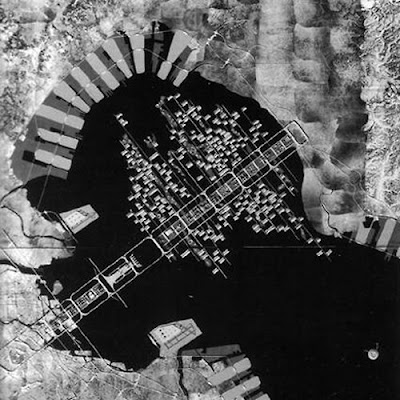

Matt Ward / unit 9 / UEL




 primary grid
primary grid secondary grid
secondary grid organisational structure
organisational structure





 Clusters in the Air / Arata Isozaki
Clusters in the Air / Arata Isozaki  Tokyo Bay / Kenzo Tange
Tokyo Bay / Kenzo Tange Overbuilding the city of Ragnitz / Ragnitz-Graz
Overbuilding the city of Ragnitz / Ragnitz-Graz
 Yona Friedman
Yona Friedman
 La Ville Spatiale / Yona Friedman
La Ville Spatiale / Yona Friedman
 Continuous Monument, on the Rocky Coast / Superstudio
Continuous Monument, on the Rocky Coast / Superstudio